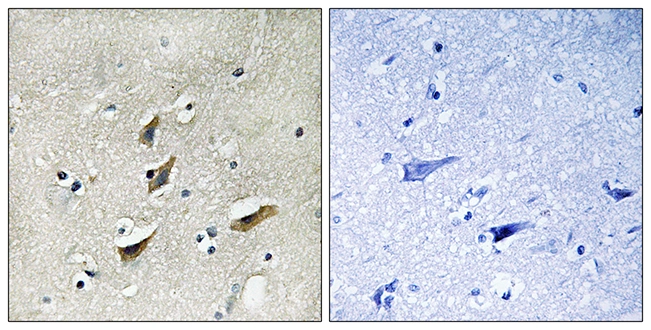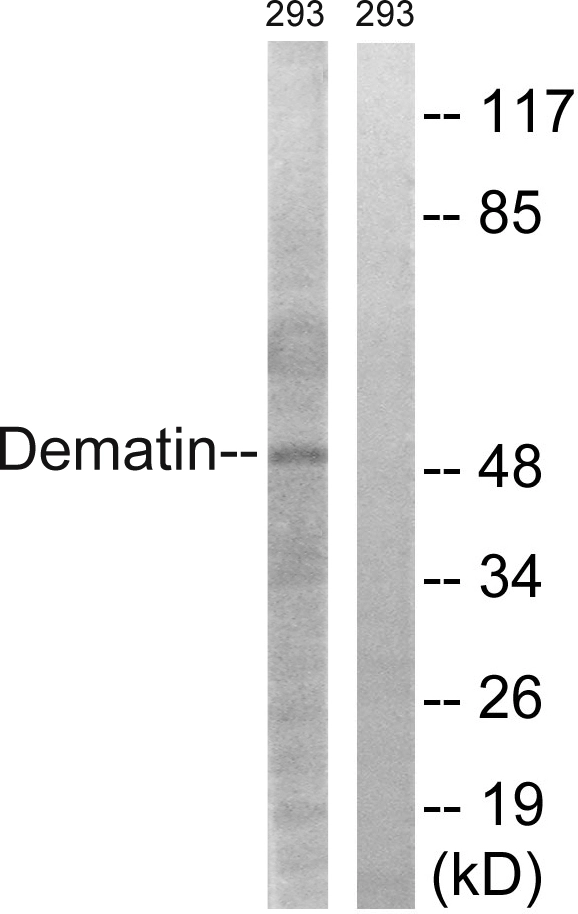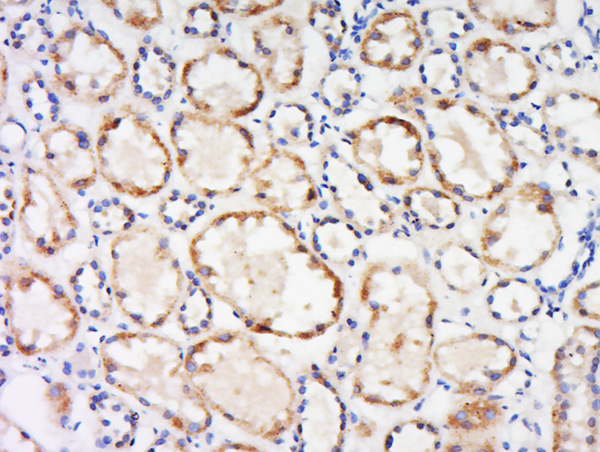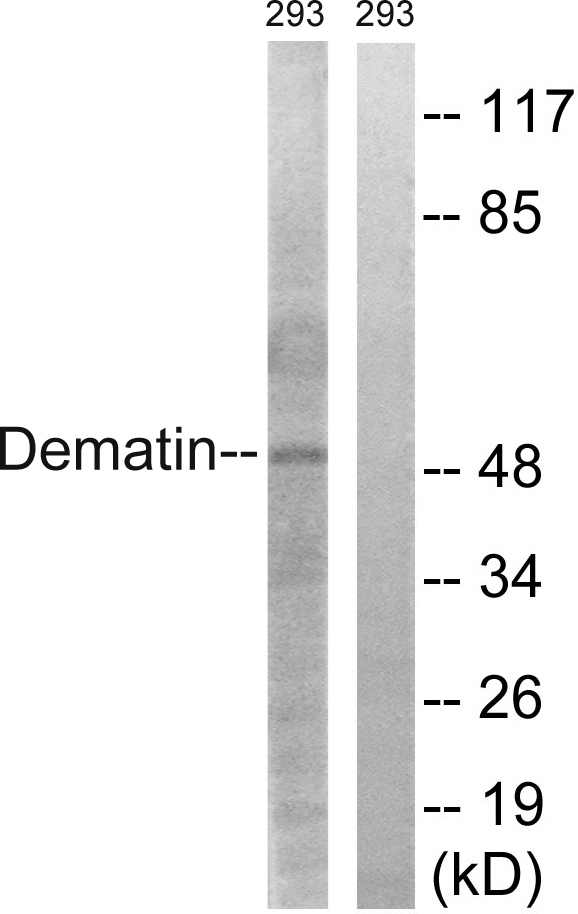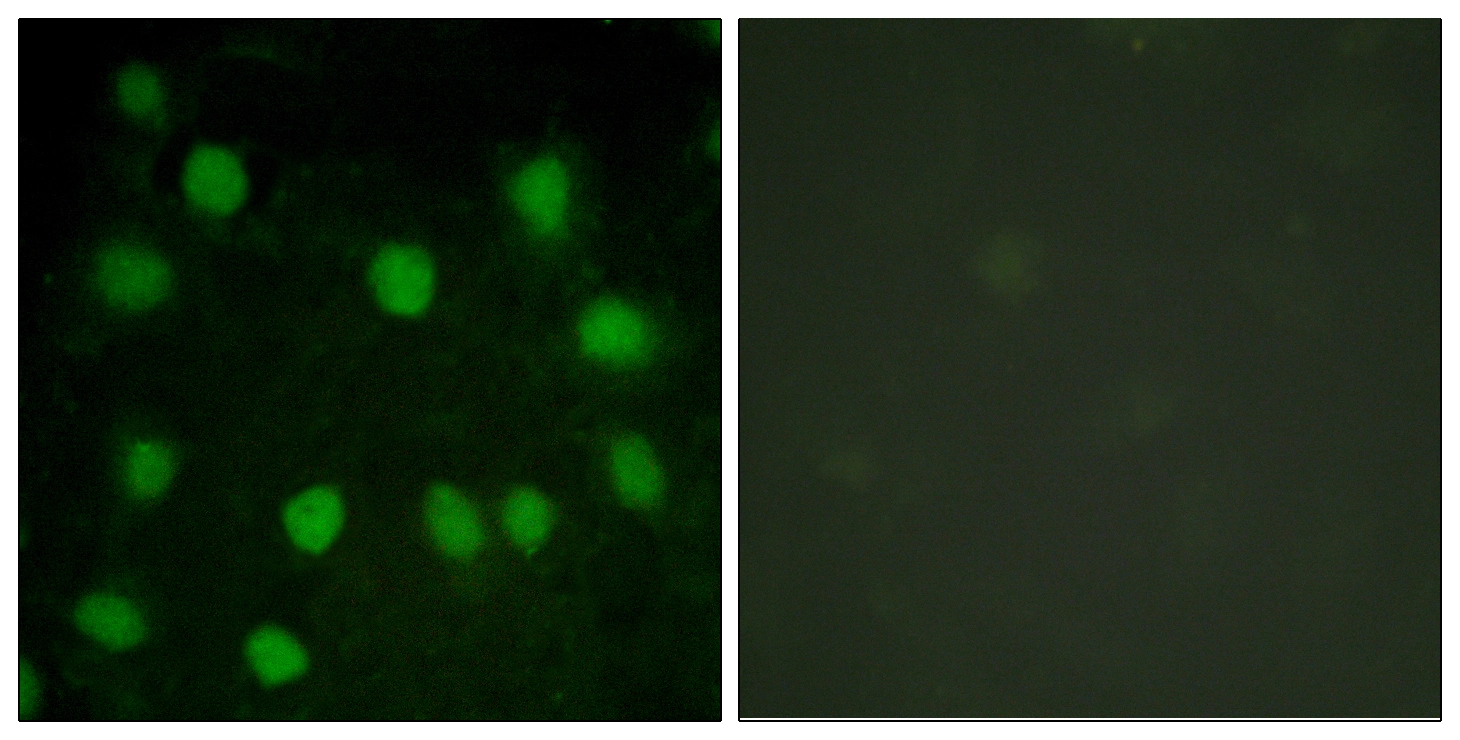
ICC/IF analysis of HUVEC cells using GTX87430 Dematin antibody. The picture on the right is blocked with the synthesized peptide.
Dematin antibody
GTX87430
ApplicationsImmunoFluorescence, Western Blot, ImmunoCytoChemistry, ImmunoHistoChemistry, ImmunoHistoChemistry Paraffin
Product group Antibodies
TargetDMTN
Overview
- SupplierGeneTex
- Product NameDematin antibody
- Delivery Days Customer9
- Application Supplier NoteWB: 1:500~1:1000. ICC/IF: 1:100~1:500. IHC-P: 1:50~1:100. *Optimal dilutions/concentrations should be determined by the researcher.Not tested in other applications.
- ApplicationsImmunoFluorescence, Western Blot, ImmunoCytoChemistry, ImmunoHistoChemistry, ImmunoHistoChemistry Paraffin
- CertificationResearch Use Only
- ClonalityPolyclonal
- ConjugateUnconjugated
- Gene ID2039
- Target nameDMTN
- Target descriptiondematin actin binding protein
- Target synonymsDMT, EPB49, dematin, erythrocyte membrane protein band 4.9 (dematin)
- HostRabbit
- IsotypeIgG
- Protein IDQ08495
- Protein NameDematin
- Scientific DescriptionThe protein encoded by this gene is an actin binding and bundling protein that plays a structural role in erythrocytes, by stabilizing and attaching the spectrin/actin cytoskeleton to the erythrocyte membrane in a phosphorylation-dependent manner. This protein contains a core domain in the N-terminus, and a headpiece domain in the C-terminus that binds F-actin. When purified from erythrocytes, this protein exists as a trimer composed of two 48 kDa polypeptides and a 52 kDa polypeptide. The different subunits arise from alternative splicing in the 3 coding region, where the headpiece domain is located. Disruption of this gene has been correlated with the autosomal dominant Marie Unna hereditary hypotrichosis disease, while loss of heterozygosity of this gene is thought to play a role in prostate cancer progression. Alternative splicing results in multiple transcript variants encoding different isoforms. [provided by RefSeq, Nov 2014]
- Storage Instruction-20°C or -80°C,2°C to 8°C
- UNSPSC12352203

